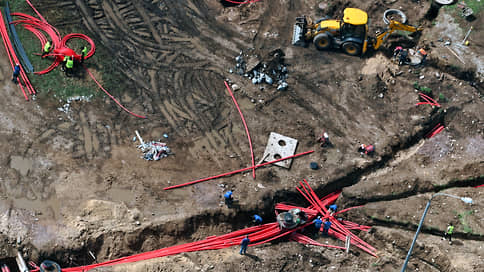The housing and communal services infrastructure renewal program may be in jeopardy
[ad_1]

A series of utility failures over the past year has forced authorities to increase the pace of updating such systems. This program may be in jeopardy due to a shortage of personnel, materials and equipment, the State Duma warns. Contracting companies in the housing and communal services sector, however, talk about an uneven workload of orders and express readiness for new projects. Moreover, the cost of updating the housing and communal services infrastructure is constantly growing.
Kommersant obtained a letter dated March 5, 2024, in which the first deputy head of the State Duma Committee on Construction and Housing and Public Utilities, Vladimir Koshelev, informs the head of the committee, Sergei Pakhomov, about the risks of failure to complete tasks to increase the pace of modernization of utility systems throughout the country. These plans were discussed in early February at a meeting of the State Duma’s industry working group. As Mr. Koshelev writes, in the next six years a large state order will be formed to carry out such work, while the resource base is not ready for such a sharp increase, which will inevitably lead to a shortage of all basic resources.
The deputy warns that already in 2024–2025 there will be a multiple increase in the cost of this work due to a speculative increase in prices for materials, equipment and an increase in wages. According to him, a similar situation arose in 2019–2023, when large national projects in the construction sector were being implemented.
The wear and tear of communal infrastructure, according to various estimates, ranges from 40% to 60–80%, depending on the region, notes Nikita Chulochnikov, president of the Association of Real Estate Service Companies. Since 2023, a new program for modernizing utility infrastructure has been launched in the Russian Federation, which should allow updating about 100 infrastructure facilities and 8 thousand km of networks. In 2023, 337 billion rubles were allocated to the housing and communal services system in Russia. from various sources, and by 2030, 4.5 trillion rubles will be allocated to increase the pace of modernization of municipal infrastructure, including private funds, the country’s President Vladimir Putin previously stated.
Since the end of 2019, the cost of construction has increased by 63%, calculated Stanislav Sagiryan, General Director of RKS Development Group of Companies. Large-scale government projects indeed serve as a prerequisite for speculative price increases, confirms Managing Director of Metrium Ruslan Syrtsov.
The cost of updating and repairing the utility system has increased one and a half to two times in recent years, says Nikita Chulochnikov. The current level of production of equipment and materials in the Russian Federation is not ready for a significant increase in production volumes, which will require investments by manufacturers in fixed assets, which will lead to a further increase in the cost of products, says Sergei Kostyuchenkov, Chairman of the Committee on Entrepreneurship and Housing and Public Utilities at the Tula Chamber of Commerce and Industry. In addition, serious investments in the modernization of production and delivery of utility resources will lead to an increase in wages for specialists, he adds. Contractors will be forced to increase the cost of their services, which in turn will lead to an increase in utility bills and may cause a negative reaction from property owners, PIK-Comfort notes.
The shortage of capacity needed to modernize housing and communal services systems may worsen in those regions where it already exists, notes Sherpa Group CEO Alexandra Galaktionova. But with a high probability, these projects will be distributed across the country more evenly than was the case with large-scale construction projects, which became one of the reasons for the serious increase in prices for the same building materials, she adds. There are various contractors in the housing and communal services sector, including much smaller ones than, for example, in road construction, notes Ms. Galaktionova.
Contracting organizations in the housing and communal services sector themselves claim that they do not feel a shortage of capacity. “Currently our workload, like many companies operating in this sector, is about 20%,” says Anna Panacheva, president of Linertek Group of Companies. Therefore, she continues, the market is ready for additional stress. A Kommersant source on the market also notes that now the bulk of orders in this industry are distributed among several large companies, while other contractors are not working at full capacity.
[ad_2]
Source link





